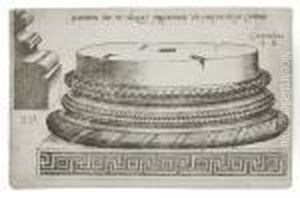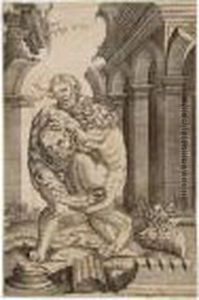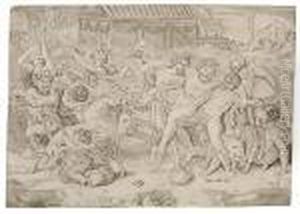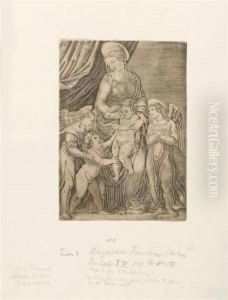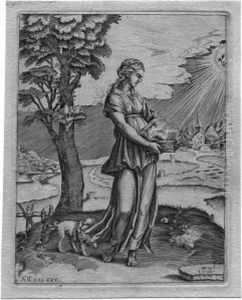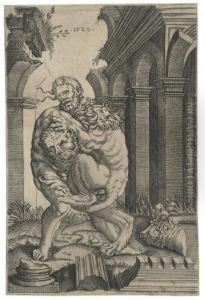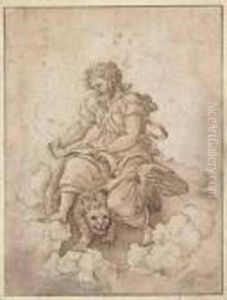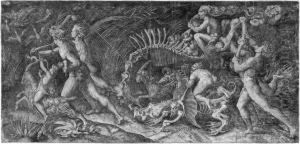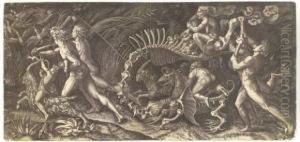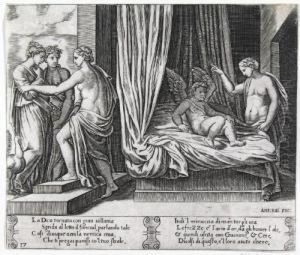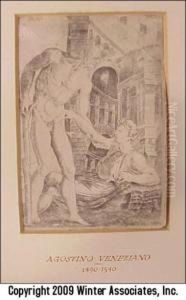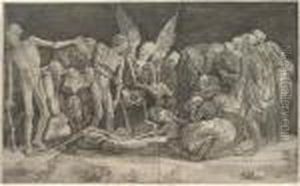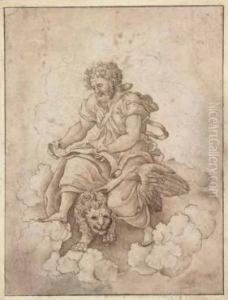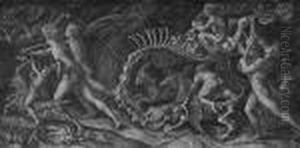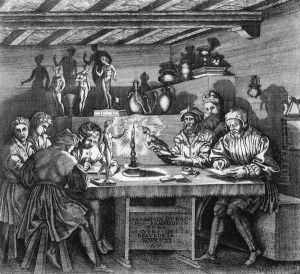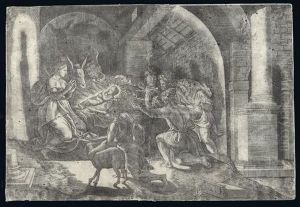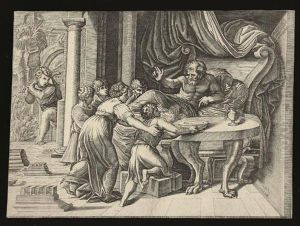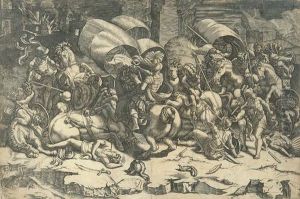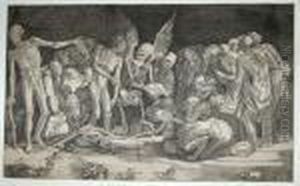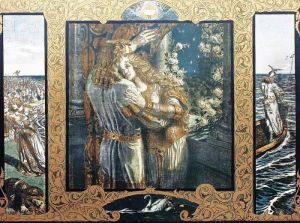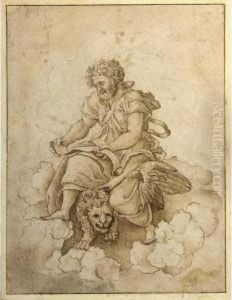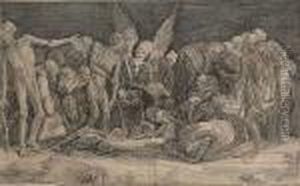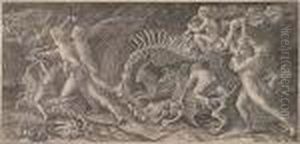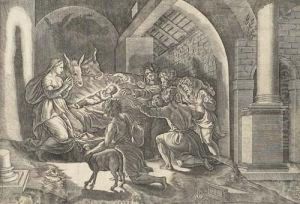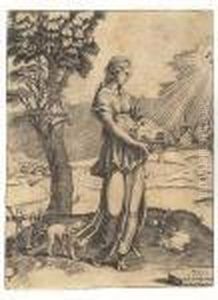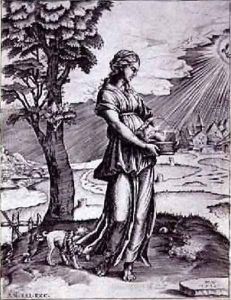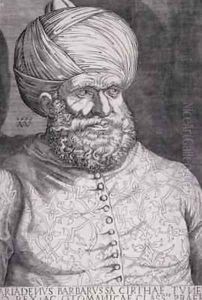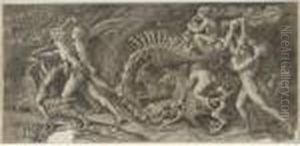Agostino dei Musi Paintings
Agostino dei Musi, also known as Agostino Veneziano ('the Venetian'), was an Italian engraver of the Renaissance period, active during the first half of the 16th century. He was born around 1490 in Venice, and his works are predominantly engravings. Agostino was known for his skillful adaptation of other artists' works into engravings, which was a common practice of the time for disseminating artworks widely.
Agostino moved to Rome around 1516 where he became a pupil and assistant to Marcantonio Raimondi, one of the most significant engravers of the time. This collaboration was pivotal for his development as an engraver. Working in Raimondi's workshop, Agostino was exposed to the artistic environment of Rome and the works of prominent artists such as Raphael. He was part of the team that produced engravings after Raphael's designs, which contributed to the spread of the artist's fame and the High Renaissance style.
Agostino's own style was characterized by his meticulous attention to detail and his ability to translate the depth and subtlety of the originals into the engraving medium. His works include original compositions as well as copies after other masters. He was particularly noted for his landscape backgrounds and the use of parallel lines to create tonal effects.
By 1520, Agostino had begun to produce engravings under his own name. He developed a substantial body of work, including religious subjects, mythological scenes, and reproductions of ancient Roman art. One of his notable series is 'The Climbers,' which depicts figures climbing rocks and is thought to symbolize moral and intellectual struggles.
The exact date of Agostino dei Musi's death is not clear, but it is believed that he was active until at least 1536. His works continued to be influential after his death, as they were collected and studied by artists and connoisseurs. Agostino dei Musi remains an important figure in the history of engraving for his role in the transmission of Renaissance art and his contributions to the development of the engraving technique.
